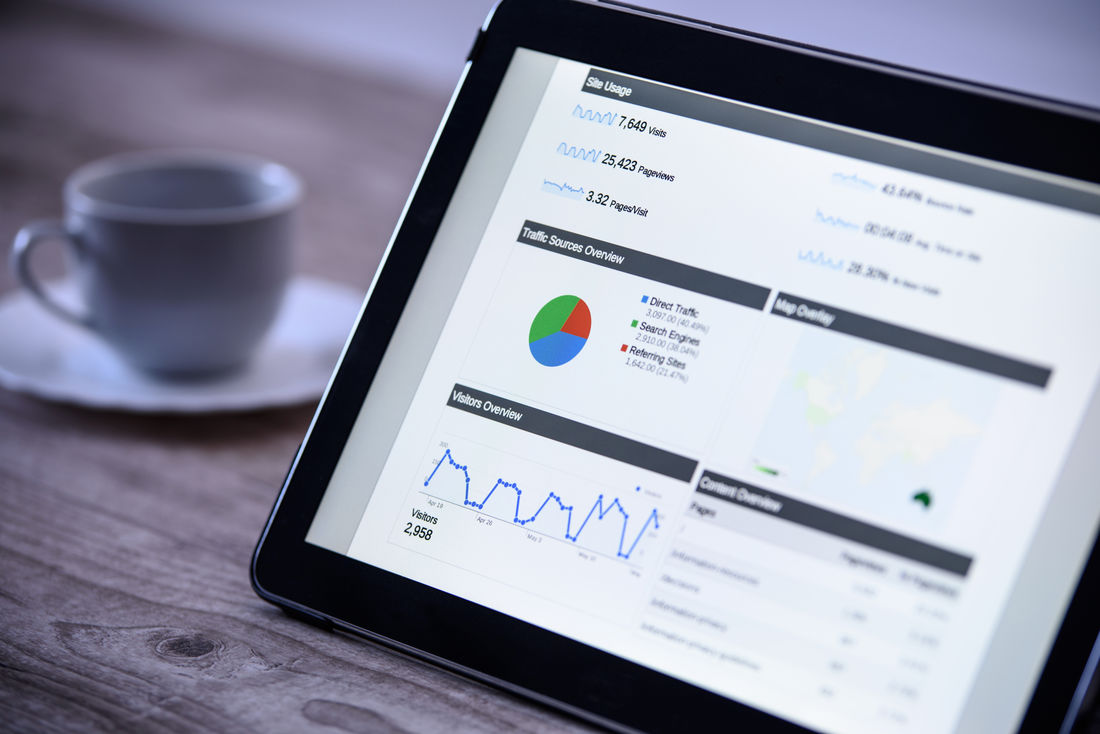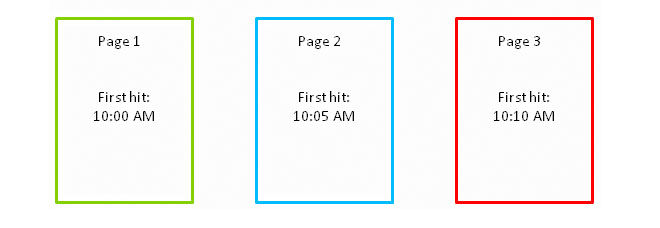Don’t panic if your website has low “session duration”
Webmasters often talk about high bounce rate and low time on site (or low average session duration) as though they’re big problems for your website. But they’re not always bad for business.
Your website can still be a high-converting website with a high bounce rate and low time on site.
Say what now? (We’ll explain what these terms mean, and we promise to keep it simple).
Google Analytics gives website owners a wealth of data about their site. For data-fanatics, it’s fun. For everyone else, it’s confusing and can make you worry.
Is my website good enough? Should I be doing more? Is this number a problem?
Not surprisingly, reading about website statistics can be confusing. So let’s break down what these metrics mean, and how to understand them in your own website.
First, let’s understand the metrics
Ideally, you’d have access to a few months of website traffic data in Google Analytics so you can establish a pattern and look for any problems.

What’s average session duration?
Session duration, also called time on site, refers to how long visitors stay on your website. From the time one person arrives at your website, to the time they leave, that’s one session.
Average session duration is a calculation from all visitors who came to your website. Let’s say 100 people spent a total of 3 hours 20 minutes on your website today. Some visitors stayed 5 seconds, some stayed 4 minutes, and some stayed 20 minutes. That’s a total of 200 minutes for 100 people, or an average session duration of 2 minutes.
In one session, a visitor might:
- view one page and read it in detail (a 2000+ word long article might be a 6-8 minute read)
- poke around your website for a while looking at lots of pages (multiple product pages looking for gift ideas)
This is what’s called page views.
Average page views are a calculation from all visitors. If those same 100 visitors looked at a total of 180 pages today, then your average page view number is 1.8 pages per session.
In general, if your website’s average session duration is under 1 minute, that’s considered low. 2-3 minutes is pretty average across all websites, 3-5 minutes is above average, and anything higher is quite long (but also much more rare).
However – don’t panic if your average session duration is less than 2-3 minutes.
If most of your web pages have about 300-500 words of text, and it’s clear and well written, you’ve succinctly answered your customer’s question in less than 2 minutes. They’ve got the answer they need.
Or perhaps what your customer needed today was a ballpark price for something they’re planning. They land on your product page, jot down the price, and they’re off again in under 1 minute. Of course, that results in low session duration in your statistics. Next time, they might come back to buy from you, but today, all they needed was a quick price check. And that’s fine.
More about session duration on Google support.

What is bounce rate?
Bounce refers to when a visitor lands on one of your website pages, views only that one page, then leaves.
Bounce rate is the percentage of visitors who view just one page, then leave.
Webmasters often say that a high bounce rate means there’s something wrong with your website or your content.
Common problems include:
- The page took too long to load, and customers got bored waiting (slow page load speed)
- Page content didn’t match what the customer was looking for
- The website wasn’t mobile responsive so the website didn’t work on the customer’s device
A low (or good) bounce rate is anything up to 40%. That means 40% of visitors read one page, then left your website. 40-55% is pretty average. 55-70% is on the high side, and anything over 70% is considered high.
However – don’t worry if you see that your bounce rate is over 70%. Depending on your business, this may be no cause for alarm.
Think about how many times you click a news article from your Facebook feed, read that one page, then go back to what you were doing.
Or you visit a recipe website, click “print to PDF” to save for later, then leave that website. In fact, it’s completely normal user behaviour. It could simply mean that the visitor found exactly what they needed from that one page.
More about Bounce rate on Google support.
Then, let’s look at how customers experience your site
What is your website usability (or UX) like?
It’s worth checking your Google Analytics statistics to see if you can identify a problem or a pattern with usability.
You should investigate how easy it is for visitors to navigate between pages, click buttons and so on. If your website is tricky to use, they’ll give up and go elsewhere. That’s common cause for high bounce rate or low time on site.
Alternatively, a high bounce rate only on mobile devices could mean your website isn’t mobile responsive. You can easily fix that by implementing a mobile friendly design.
But if the bounce rate is high across all sessions, and you’re still getting good website traffic (lots of visitors) and your website is making money for your business, it’s probably fine.
If visitors are spending an average amount of time on your website, but they’re not buying anything, you need to improve your sales page content. Perhaps there’s not enough information for customers to make a decision, or your product descriptions are not very convincing. A good copywriter can improve your product descriptions and sales pages to help you make more sales online.
What is your conversion goal and conversion rate?
Different websites have vastly different conversion goals.
Click-baity websites (like “Check out these child celebrities 20 years later”) need to keep readers scrolling to show them lots of ads. That’s their key conversion goal.
eCommerce websites want customers to view and buy products online, so their conversion goal is to convince the customer to complete the purchase.
A business coach’s website has the conversion goal of collecting a potential student’s email address for their newsletter. That way, they have opt-in permission to keep in touch with the customer, and start sending gentle sales emails. Most of their sales process happens during the email nurturing sequence, rather than from the website itself.
News websites want lots of traffic on today’s hottest news articles, so they can show ad content.
Conversion rate describes the percentage of visitors who reach your main conversion goal, whether that’s buying an item, giving you their email address, or reading an article. (For more information, check out our article on conversion rate optimisation).
As long as your website achieves your conversion goals, the other metrics don’t really matter.
Don’t stress about how to increase session duration
There are all sorts of fancy tactics you can use to keep visitors engaged and on your website for longer.
Videos, infographics and long-form detailed articles can help increase session duration.
But…
Don’t do it just for the sake of it.
It’s not the primary goal of your business to get good statistics in Google Analytics.
If your website is converting well, in that customers are buying from you, or they’re coming back to visit your website often (to read a short, punchy article), then you don’t need to worry about your low session duration. These metrics are only a concern if your website isn’t achieving your core business goals.
Upgrade your online presence
When you’re ready to get started on your new professional website, get in touch with our affordable website design experts on 1300 367 009. eCommerce-compatible websites start from just $1195 + GST.


